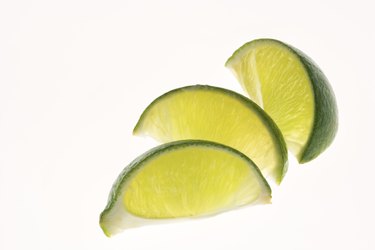
When you leave ripe or unripe fruit on your counter or in your house, you risk developing a problem with fruit flies. Fruit flies feed off the fruit and resemble small gnats, as the flies are small and black. Controlling the pests yourself is a long and expensive process. Fumigation, which involves spraying a chemical toxin on the flies, does kill the fruit flies.
Ethylene Dibromide
Video of the Day
Ethylene dibromide or EDB is one of the more popular methods of controlling and killing fruit flies, according to Agriculture and Consumer Protection. The chemical kills fruit flies living in fruit and also kills bugs living in grains grown in tropical climates. The chemical appears in chemical dips that treat flies growing inside fruits.
Video of the Day
Warning
EDB is toxic to humans. Humans exposed to the chemical may absorb it through contact, such as touching sprayed objects. Humans are also at risk of inhaling the chemical and causing respiratory problems. Exposure to the chemical causes skin irritation, liver damage, kidney damage and lung damage. A 1960 study by Caylor and Laurent found that animals exposed to the chemical produced fewer eggs, laid smaller eggs and the chemical affected the amount of sperm produced by male animals.
Considerations
As soon as you notice a problem with fruit flies, consult a professional exterminator. Discuss the type of chemicals used for fumigation and any precautions you must take in your home. Exterminators still use a type of EDB, but it often occurs in areas outside of the home, such as on infested areas of farmland. Home improvement stores and hardware stores sell do-it-yourself kits that include foggers. The foggers work as a home version of fumigating the space. You place the metal canister in the affected area, pull the tab on the top of the canister and leave the house. The chemical comes out of the canister in a gas form that reaches hidden areas of the room and kills all of the fruit flies.
Precautions
After home fumigation or professional fumigation, clean any items that touch the chemicals, including pots, pans, dishes and cooking utensils. Wipe down the inside of your cabinets and throw away any open packages or foods that were exposed to the fumes. Wipe down the inside of your cabinets with warm water and soap, removing any traces of the chemical lingering on the insides before putting away any dishes or foodstuff.